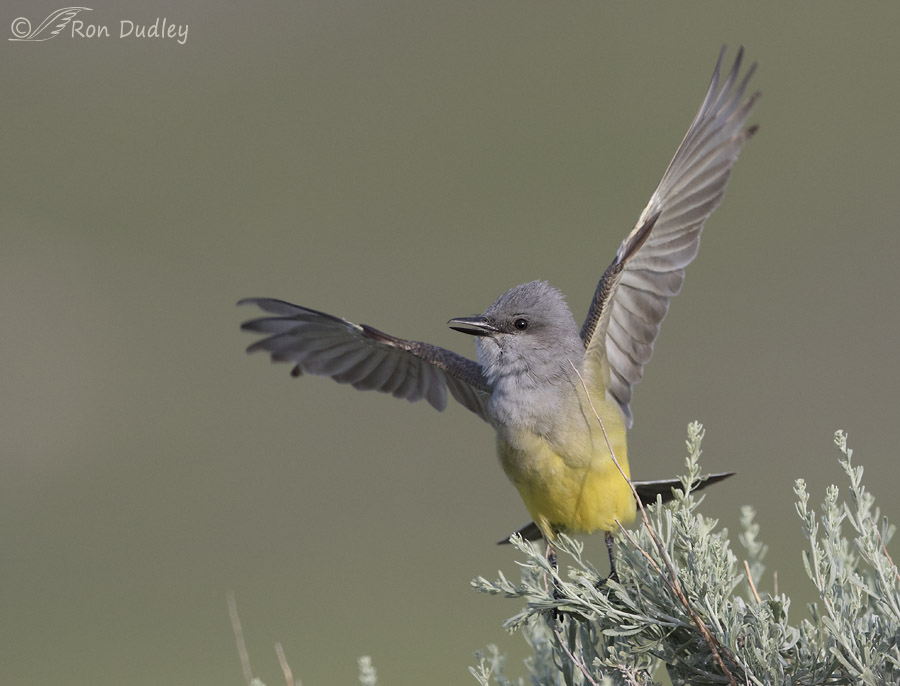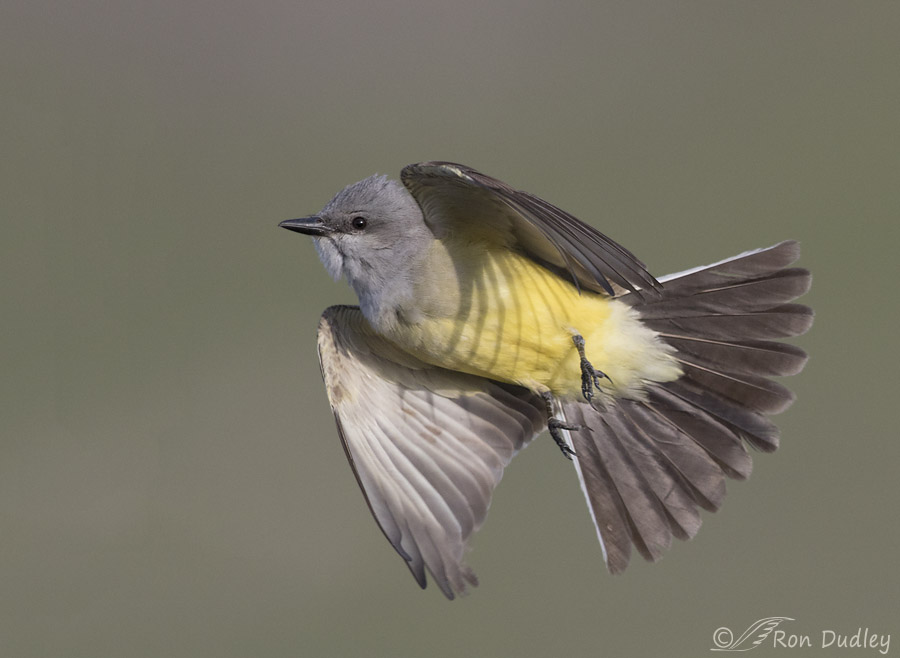The Western Kingbird is known for its belligerent behavior and at least 9 aggressive displays have been identified. The Wing Flutter is one of them.

1/3200, f/5.6, ISO 800, Canon 7D Mark II, Canon EF500mm f/4L IS II USM, not baited, set up or called in
This is the male of a breeding pair photographed about a month ago on Antelope Island. His mate was occupied by nest-building, an activity the male does not participate in directly, though he does perch nearby and guard the nest against other species. There were many other birds in the area including meadowlarks, thrashers, orioles, blackbirds, magpies and other kingbirds and when one of them was perceived as a potential threat the male would sometimes display.
I believe this to be the Wing Flutter display where the kingbird extends its wings and then flutters them rapidly in small arcs. This behavior is thought to be an aggressive (agonistic) display though an actual fight does not usually follow.

1/4000, f/5.6, ISO 800, Canon 7D Mark II, Canon EF500mm f/4L IS II USM, canvas added for composition, not baited, set up or called in
This time the kingbird flew off immediately after displaying but I didn’t notice if he confronted another bird after he left.
As I look through my supertelephoto lens I see a lot of details I’d miss with the naked eye but the tunnel vision of the lens makes me miss some things too.
Ron


Fabulous shots Ron!
Charlotte
Each time I look at your images I see something different, something more. Which is wonderful. At the time with your trigger finger poised I suspect an ‘impression’ is all you can hope for. The detail and the delight comes later…
I’m actually lucky to get much of an “impression” at all when I’m in the field, EC. I have to concentrate so hard on the mechanics and technique of photography that I often miss much of what’s really happened until I review my images.
Thanks for the beautiful photos and the explanation of the flutter. We have a pair in our back yard now with little ones, and when there is a
“changing of the guard,” the male (I guess) comes flying in with a flutter and a song. Then, the female will leave for a few minutes, return, and the male leaves. This behavior is repeated all day, and maybe night, too? Right now the babies look like nothing but little mouths!They are fascinating to watch. Love your posts!
They’re fun to watch, aren’t they, Jane. I’m sad to report that the first nest of this pair failed but they’re trying again.
Love that wing shadow!
I like it too, Linda.
Interesting behavior…like the “Look how big anfd tough I am! Check out my abs!” display. Also like the feather shadow on the bird’s body as it flies off….something about it is very appealing!!! Happy (comfortable)Fourth!
I noticed those primary shadows too, Patty. And liked them. Happy almost Fourth to you too.
On second thought, since it’s a bird, he’s probably saying, “Look at those pecs!”….:-)
Make that “pecks”…. 😉
Hi Ron,
Beautiful photos, beautiful bird! Thank you!
Does the female WK look a great deal different. Does she have no yellow color, lighter color, and or less color???
I have a photo of the Eastern Mockingbird. They get on the ground (in low grass) and display their wings in and out to scare up food. Totally different display than defense, but, it shows different ways they use their wings…to hunt and defend, and of course, to fly.
I so love our feathered friends!
Deborah, the Western Kingbird male and female look alike. The only way I knew that this bird was the male was behavioral – only the female builds the nest.